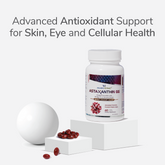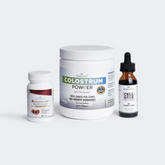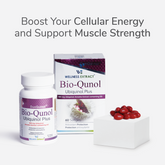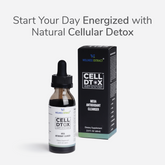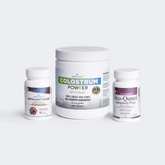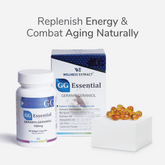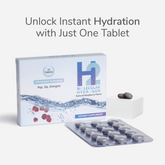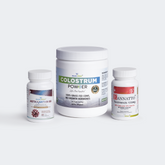Estimated Reading Time: 8 minutes
|Osteoporosis, a major global health concern, particularly among older adults, is characterized by a loss of bone density and strength. Alone in the US, an estimated 10 million people over 50 years old are diagnosed with osteoporosis. The worst part is that, at times, osteoporosis can be really 'silent' until a fracture shows up. And that is really painful.
However, the good news is that there are ways through which you can manage osteoporosis pain at home. Wondering how? Here is a guide.
But, First What is Osteoporosis
Before going through this, let's quickly understand the meaning of osteoporosis. Osteoporosis is a common bone disorder amongst elders related to a decline in bone mass and density. The decrease in bone mineral density results in a drop in bone strength and increased fracture risks (broken bones).

What Causes Osteoporosis
Osteoporosis is a prevalent health condition among all races and genders. It can occur at any age; however, the risk of developing osteoporosis increases with age. In 2017-18, osteoporosis prevalence was higher among women than men.
It occurs when there is a significant decline in the bone mass and a change in the bone tissue structure. Additionally, certain medical conditions and hormonal changes may also trigger the risk of osteoporosis.
How to Know If You're Suffering From Osteoporosis
Well, that can often be the worst part of osteoporosis: the disease actually goes 'silent' and 'unnoticed' without showing significant symptoms. However, reduced bone density can make your bones vulnerable to fracture at any time, even in minor falls. Not only that, but even slight bending, lifting, or coughing can be risky in severe cases.
Here are some other symptoms that you may look out for:
-
Change in your posture, which may become hunched or stooped over time.
-
Bone breakage may be due to fractures or other minor injuries.
-
Pain and injuries in your hip, rib cage, or spine.
-
Pain or injuries in your feet, knees, or other joints of the body.
-
You may experience limited mobility or difficulty while completing your everyday tasks.
You can get a quick bone density scan to determine if you are having osteoporosis or are likely to develop it in the coming days. The scan predicts a T-score, that is, the comparison of your bone strength to the bones of a healthy young adult. Once you cross 50 years, it is advised to get the bone density scan done regularly for your own good. Sooner recognition leads to better management of the consequences.
Is It Possible to Naturally Manage the Osteoporosis Pain at Home
In some instances, it is possible to manage osteoporosis pain at home without taking any medications. For example, if the individual hasn't lost much bone density or mass, they may adapt to a healthier lifestyle to improve their health conditions. However, if the health conditions are severe, it is best to have a medical consultation.
Here are a few tips based on current research and studies that may help in managing osteoporosis pain at home.
Follow A Diet That Your Bones Love
Since poor bone density is the primary cause of osteoporosis, the key to its management also lies in improving bone health. Studies suggest that dietary patterns and nutrition greatly influence bone health and the risk of osteoporosis. Nutrients like calcium and vitamin D are fundamental for bone metabolism.
Additionally, try to add optimal amounts of supportive nutrients like magnesium, potassium, and vitamins K and C to your everyday meals. According to research, the Mediterranean diet is associated with a lower risk of fractures or osteoporosis.
Take Proteins in Moderation
Protein, also known as body-building food, is essential when it comes to bone health. It supports bone structure and muscle function. However, it is beneficial only when taken in moderation, aligning with a balanced diet.
Studies support that excessive animal protein may lead to increased calcium excretion. In another clinical trial, participants consuming higher proportions of plant-based proteins exhibited increased markers of bone turnover, suggesting a potential risk to bone health. Thus, a balanced intake of proteins is recommended.
Fruits and Vegetables: Root To Bone Strength
Fruits and vegetables are the powerhouse of essential vitamins and minerals. If you are vegan, a diet rich in fruits and vegetables is a great way to support your bone health. These plant-based products contribute to the body's alkaline environment, preserving overall bone density.
Further, you must follow leafy vegetables in your diet, like kale, spinach, collard greens, and Swiss chard, to reduce the risk of osteoporosis. The exact mechanism behind vegetables and bone strength is still unclear. However, green leafy vegetables are a rich source of vitamin K1, which is vital in osteoblasts and osteocalcin (OC) metabolism.
Make Essential Oils Essential
Essential oils- the concentrated plant extracts have shown significant potential for improving bone health. With their vitality, they may aid in bone repair and regeneration. Studies have shown that consuming extra virgin olive oil may reduce the risk of osteoporosis-related fractures in elders.
Additionally, you should consider the daily consumption of olive, peppermint, lemongrass, or grapeseed oil to prevent bone mineral density decline. In case of fracture pain or to get quick inflammation relief, you may also go for aroma-based therapies and massages.

Physical Activity Can Help Manage Physical Pain
Studies support regular physical activity as a viable strategy for preventing and treating low bone mass. Further, unlike medication, there are no or fewer side effects associated with exercise provided you are following the right set of exercises personalized to your gender, age, and osteoporosis severity.
As a young adult, high-impact loading activities, like soccer, volleyball, and gymnastics can help sharpen your bone mineral density. On the other hand, as an elder, you may engage in light, weight bearing activities like pilates, yoga, cycling, swimming, brisk walking, and body-weight exercises.
Be Careful! Try Not To Fall
You might be amazed to find out that osteoporosis is responsible for an estimated two million broken bones per year. Even a minor fall, in the case of osteoporosis, can result in serious bone fractures, particularly in areas like the wrist, hip, and spine.
We know that it's not exactly in your hands to control possible accidents or failures. However, you can follow some preventive measures. The first thing to do is to prioritize your age and medical concerns. Here are others:
-
Use a walker or a cane if the need arises.
-
Keep your walking paths and corridors free of any clutter.
-
Keep your rooms and daily use areas clean and dry.
-
If there is any spill in your kitchen or bathroom, make sure to get rid of it immediately.
-
Keep a functional light outside the front door of your house.
-
Install handrails and other support on your stairs.
-
Use mats and rugs all over your house to prevent slip and fall incidents.
-
Invest in a pair of comfortable and high-friction footwear that prevents you from slipping.
-
Exercise regularly to keep your muscles strong, especially the weight bearing exercises we talked about earlier
Supplements But Only After Consultations
Supplements are one of the accessible ways to bridge nutritional gaps in your diet. They directly provide essential vitamins and minerals to the bloodstream, supporting overall bone metabolism. It is best to consult a health expert for personalized recommendations based on your current conditions and medical history.
In general, you can add Geranylgeraniol (GG) supplementation to your diet. GG helps in regulating the mevalonate pathway, which also helps in the synthesis of crucial vitamin K. Vitamin K assists bone metabolism by activating the proteins involved. Clinical trials suggest that GG can also increase the potency of bisphosphonates, a drug used to treat osteoporosis.
Similarly, you can also consider astaxanthin, a powerful antioxidant. Research suggests that it may promote bone formation (osteoblast) by inhibiting bone resorption (osteoclast). In osteoporosis, astaxanthin can potentially prevent bone loss. You can also find a combination supplement of geranylgeraniol and astaxanthin to maximize the effects.
Additionally, nutritional supplements like vitamin D3, magnesium, calcium, vitamin K2 strontium, vitamin E, and omega-3 three are also linked to bone health following different mechanisms.
Precautions To Follow in Case of Osteoporosis
If you are dealing with osteoporosis, here are a few preventive measures to manage your overall health.
-
Cut down on your alcohol consumption, as it may result in calcium leaching.
-
Avoid the consumption of soda drinks or sweet beverages to avoid bone density loss.
-
Excessive sodium consumption in terms of processed meats and processed foods is linked to fragile bones.
-
Limit caffeine consumption as it may lead to bone loss in the long run.
-
Smoking and tobacco consumption are also linked to chronic bone health conditions.
-
Don't hesitate to talk to your doctors in case of a bone fracture or when you are struggling with persistent bone pain.
-
Be extra careful if you have repeated bone injuries at an early age. The problem may get worse in a later stage.
Way Forward
Osteoporosis is the most prevalent bone disorder. Still, people underestimate and delay their bone density scans. Once you start running in your late 40s or early 50s, you must register for regular bone tests. The good news is that it is not an 'actual fatal' disease. And with some lifestyle changes and preventative measures, you can manage the symptoms and consequences. Before adding a supplement or medication to your diet, always consult your doctor!
Disclaimer: These statements have not been assessed or evaluated by the Food and Drug Administration. The supplements listed above are not intended to diagnose, treat, cure, or prevent any disease. The findings are solely based on preliminary research and ongoing studies. Individual results after trying these health tips and measures may vary.
References Used:












![Top 5 Best Vitamins for Men in Their 30s [Backed by Science!]](http://wellnessextract.com/cdn/shop/articles/Vitamin_for_men_8fe0fe21-19b1-4020-b895-dc104449637e_165x.webp?v=1765878148)






